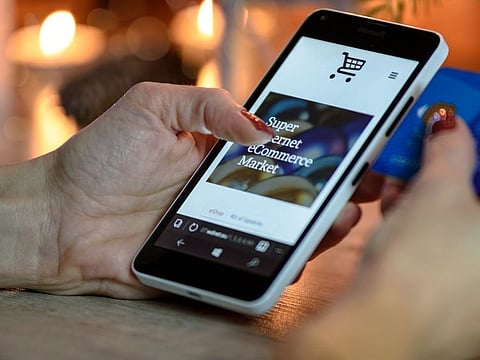UAE’s online retail has some growing up to do
Grocery shopping and actual delivery are moving on two parallel tracks and speeds

By now, I have scheduled deliveries until the end of 2020. This is not entirely my fault, though. I have been home since March 24, the day I was supposed to visit Cleveland Clinic in Abu Dhabi for a doctor’s appointment and to collect my medications.
The appointment took place over the phone, and my medications were delivered to where I am staying in Dubai. Three weeks later, I sent a message to my doctor to inquire if I should still come for my monthly shot. She deferred the shot for six weeks.
With my health being taken care of while staying at home, I had all the time in the world to focus my attention elsewhere. I hence started ordering all sorts of things online, from sports outfits to mosquito killers. Those have been delivered ridiculously on schedule as the online retail infrastructure has always been there.
I unfortunately cannot say the same about online grocery shopping.
I tried every app out there to order groceries... without any luck. There is always something off, either while placing the order or pre-delivery. In one case, I somehow managed to get a time slot for the first grocery delivery ever during my homestay.
After that, however, I could never get a time slot using the same application. And so, I switched to another.
Progressively worse
That was an utter disaster. I got excited seeing all the available time slots, placing six orders to be delivered on different days based on what is needed and when. I received one out of the six deliveries. What is even worse than the inadequacy of the delivery service is the fact that they charge you for every placed order, with no updates to reflect the delay in delivery.
Moreover, trying to contact them by phone was a complete waste of time, and so was trying to email them. I then tried contacting them on Twitter, after which they sent me what seemed to be a generic response they send to everyone trying to contact them.
Now, because it would have been days, if not weeks, between placing the order and delivering it, there is always something wrong with the order whenever it is delivered. That is, there will most probably be items that are missing, for which the money will be refunded if charged already.
Otherwise, and if not charged yet, the missing items could be replaced with close enough substitutes. COVID-19 has managed to single-handedly blur the distinction between one mainstream soda drink and the other - but not the disappointment.
Logistics mismatch
My assumption here is that the inventory tracking system is not integrated with the online grocery shopping system, with orders and inventories being checked against one another manually when an order is being fulfilled. This explains the missing items and the close enough substitutes.
To summarise the issue, the online shopping infrastructure for those local and international grocery chains is primitive. Although this could be because most of us would rather buy groceries in person, it is mainly due to the fact that those chains did not foresee the importance of an appropriate online shopping infrastructure. This is despite the fact that the whole world has been heading in that direction for years.
Yet, to be fair, no one predicted the spread of COVID-19, except for Bill Gates five years ago. Online retail, nonetheless, has been around since forever. Furthermore, the infrastructure for online retail, which has literally allowed an entire shopping mall to go online, should be more than adequate to support online grocery shopping with live inventory checks and updates.
Online retail, previously just an add-on option, has now become a vital lifeline for businesses to survive.
The last thought that I want to leave you with: Is there a correlation between the adequacy of online retail infrastructure in a country and its ability to slowdown the spread of COVID-19 within its borders?
- Abdulnasser Alshaali is a UAE based economist.
Sign up for the Daily Briefing
Get the latest news and updates straight to your inbox





